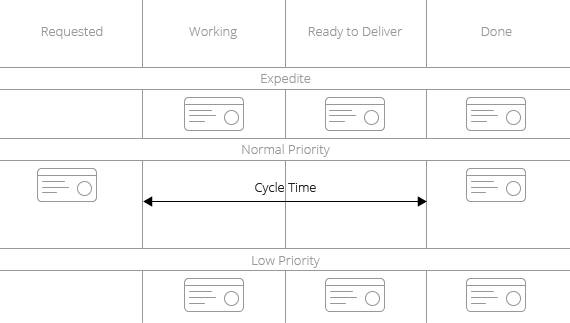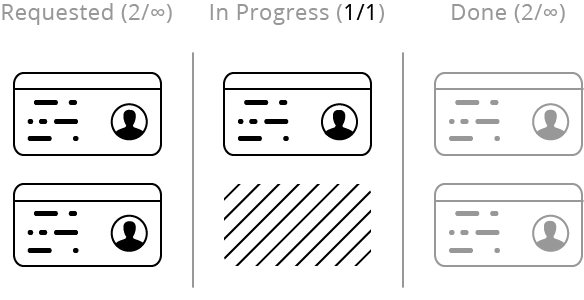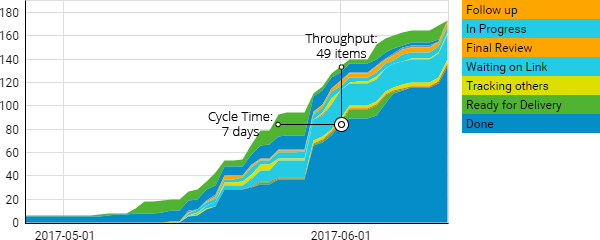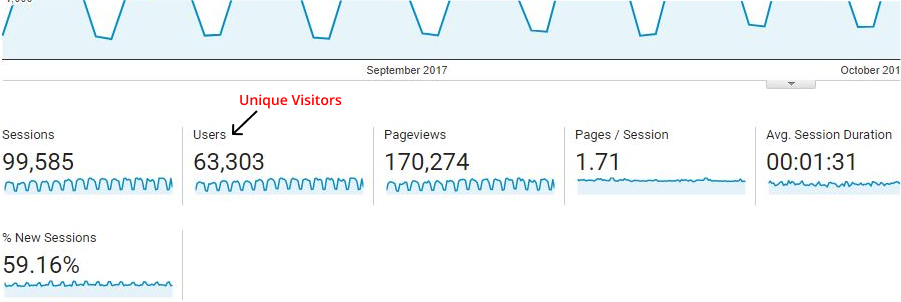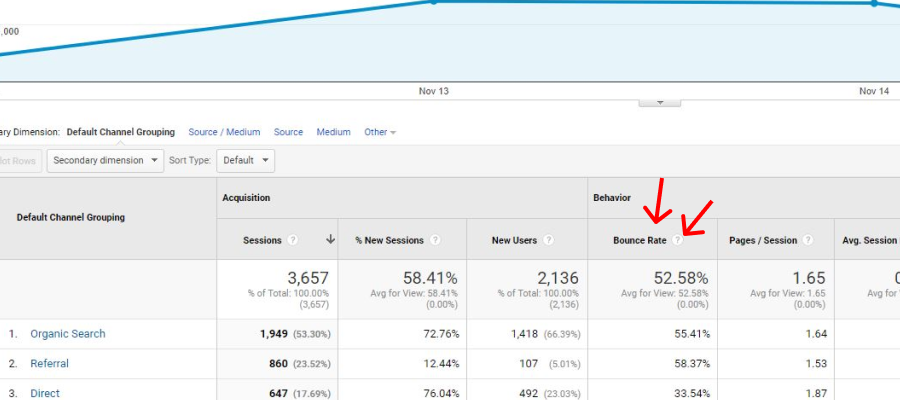You don't know whether you are successful or not if you don’t measure success. If you have a clear idea of what metrics describe success, then you can track progress and improve work process in order to achieve the desired outcome. As Peter Drucker said, "you can't manage what you can't measure."
No matter the industry, you need to have a clear idea of how to measure success. This article will address what kind of Lean KPIs your company needs to track in order to make sure all parts of the business are doing fine. These KPIs will help you identify problems in the workflow, discover the full potential of a team and achieve continuous improvement.
In the first part of the article, we will explore some lean metrics examples that will help you analyze your work processes and improve your workflow. After this, we will take a look at the metrics that play a crucial role in marketing performance.
Before we start, let’s clarify that lean metrics are those ones, which can assist you in identifying true value from the perspective of your customer. Lean KPIs focus on measuring value and help you eliminate waste.
Let's get rolling without further introductions.
Lean KPIs for Your Workflow
Average Lead Time [Days/Hours]
One of the most important lean KPIs (if not the most important) to track is your average lead time to production. In a perfect world, this would mean the time it takes an idea to be converted to an actual product and deployed to production. In reality, the lead time is usually calculated as the time between the moment you start working on an idea to its full realization (the time it spends waiting is ignored because the customer doesn't care about it).
If you are able to quickly convert ideas or users' feedback into an actual product, you will be a star and people will love you. On the contrary, if you are slow to deliver what your customers are asking for, then you risk losing them and making your competition happy.
With this in mind, always track your lead times and try to improve them. It might be a good idea to classify your items into different classes so that metrics don't get skewed; e.g. average lead time per size, per priority, per customer, etc.
Average Cycle Time [Days/Hours]
Cycle time is another important lean metric you need to follow. Basically, cycle time begins at the moment when a new task enters “in progress” stage and somebody is actually working on it. If your workflow consists of several different sub-stages, then the lead time is practically the sum of the cycle times of all sub-processes that form the entire process of delivering goods.
Let's explain that further. Suppose your entire process is "idea generation" -> "idea implementation" -> "feedback/testing" -> "deployment". The time a task spends in each of the stages is called cycle time and the sum of all cycle times equals the lead time.
It's easy to realize that reducing the cycle time of all stages will lead to reduced lead time in the end. Try to reduce cycle time as much as possible, but at the same time be careful not to create local sub-optimums. For example, if "deployment" takes 10 days on average, but all other stages take only two, then reducing the cycle time of anything else besides the deployment phase will make things worse. In other words, be careful and optimize only where it makes sense.
Distribution of Effort [%]
What if you have the best lead and cycle times, but you only work on defects? This is obviously not acceptable and you should have a good idea of the time you spend working on value added activities vs. non-value added ones. This is easily achievable with any of the tools like Kanbanize by Businessmap - just put a type on each task (ticket) and then use the analytics module to review the data. The target is obvious: more features and fewer defects.
Number of Items in Progress [Count]
The big amount of work in progress is an enemy of your productivity as a company. The greater the number of items you work on at the same time, the more often your team will multitask. This will lead to more context switching between different tasks. Respectively, the cycle times will increase and therefore the lead times will follow. We've already explained that long lead times are bad, right?
Consider imposing WIP (work in progress) limits to the different stages of your workflow by adopting the Kanban method. This will reduce stress and will improve the quality of your work. If you have WIP limits already, make sure that you always comply with them.
Number of Open Issues [Count]
This lean metric can be considered as appropriate for the SaaS industry. However, this is not strictly a SaaS KPI because issues appear in every business, no matter the industry. So let’s keep exploring.
If you ship with known issues in your product, things are bad. Having a dozen open issues is somewhat okay. However, deploying with tens of open issues or hundreds of them (God forbid) is something you MUST tackle right away. Poor quality will kill you in the long run, and you should definitely take a closer look at the number of issues. Define a limit that must never be crossed and make sure to invest in fixing as many of the issues as you can (or makes sense).
Number of Customer-reported (Open) Issues [count]
This lean KPI is crucial and it will keep you on the right track. Nowadays, customer satisfaction is more important than ever before. Customer issues must be your top priority. Period.
If a customer suffers, you are losing business and if you get too many complaints, you will soon be looking for another job. Define the target of 0 and work towards it. It may not always be possible to have zero open defects, but 90% of the time it should be like that. Track it, optimize it, control it.
Number of Recurring Issues
If there is anything worse than a customer issue, it is a recurring customer issue. The customer has reported it, you have fixed it, the customer was happy for a month, but then that same nasty issue reappeared. The customer is already asking herself "Do they know what they are doing at all?". You MUST NEVER allow that. It will happen once in a while, but when it does, be dead serious about it and do whatever it takes to prevent it from happening again.
This is an important KPI for software development, but not only. So, track the number of recurring issues and if it becomes higher than zero you should do something about it.
Cumulative Flow Diagram (Bonus)
Many companies start using Kanban boards, so they can visualize their workflow and acquire a better understanding of their work processes. These businesses have the advantage of using cumulative flow diagrams (CFD). This diagram shows you the current state of your work. It can help you decide whether you need to speed up the peace, restructure your work, or increase your capacity. You can get actionable advice on where you need to focus your efforts in order to improve your process in a single glance.
In the second part of our Lean KPIs article, we will talk about digital marketing.
Nowadays, everyone who has managed a company knows that at some point, you must start investing in marketing and business development much more than in product/service development.
Digital marketing has become an integral part of the marketing mix. Both for B2C and B2B. Growing your website’s visitors, brand awareness and, respectively, your company is probably the hardest thing you have to do, and the goal of this post is to suggest key metrics that you should collect, monitor, and act upon.
Lean KPIs for Your Digital Marketing
It’s All About Active Users
You need to measure users. Nothing is more important than that, at least from the marketing point of view. The more users you get, the more you convert into customers, the more successful your company is.
Be careful, though. If you focus on the total number of users or new users or anything else that doesn’t give you a good idea about the number of ACTIVE users, you might be the victim of your own self-deception.
Total users always grow, new users, by definition, are something good. You may have 1,000,000 users, and you may be getting 100,000 more each month, but you would be horrified to discover that you have just 1,000 active!
Measure whatever you want to measure, but make sure to know how many active users you have.
Website Visits (+Unique Visitors + %New Visits)
If you are in the SaaS or e-commerce industry, by definition, your website is your most important weapon. But even if you are in the FMCG or another sector, still your website is of the highest importance. If you do not track the number of visits, then you might not know whether your business is growing or shrinking. You can do that with Google Analytics or a similar tool but definitely track that on a regular basis. If users land on your website from paid campaigns, it's worth reviewing those too - analyze performance in Google Ads Manager or export Google Ads data to compare with other metrics.
Pay attention to the number of unique visits. If you have a lot of visits from a handful of people, you might not be able to scale your company. Always remember that you need more and more new users, and therefore the unique visitors must also grow.
Of course, you need to track the percentage of new users each week/month. Try to keep it constant or a growing number. If your new visits start going down, you should probably consider a marketing campaign (link building, paid campaigns, guest blogging, etc.).
Bounce Rate
The bounce rate is a lean metric that shows you how many people landed on your site and left it without going to another page. The lower your bounce rates are the better (it is usually % of all visits). A Bounce rate of 0-30% is good, 30-60% is tolerable but something to improve and anything above 60% is not good (all of these come from my own experience, numbers can vary from business to business).
A key element to tackle the bounce rate is to experiment with your website – change your slogan, front page, registration form, etc. The obvious goal is to improve, but if you happen to make things worse, make sure to detect that ASAP and take the necessary steps to revert the breaking changes. This is only achievable through regular collection and analysis of the KPIs that we talk about.
Again, don’t focus on the totals only. Your site is likely to have more than one landing page and each page has its own bounce rate. If your homepage has great bounce rate, but your pricing page performs terrible, you should probably think about your pricing, right?
Last Page to Visit
Visitors’ flow is somewhat hard to get in a comprehensive way, but a very important part of exploring your users' behavior. If there is a page on your website that visitors get to, but always leave after that, try to figure own why that happens. I will go no further with this part, because there are thousands of possible interpretations and I risk to mislead you, but please make some efforts to investigate.
Social Engagement and Growth
Just a few words here. If you have a social presence (Facebook, Twitter, G+, Linkedin, etc.) make it measurable, especially if you put a lot of effort into it. You might be active, but if your users’ engagement is low, there is probably something to be changed. Don’t just throw content out there, make it a quality work and not quantity work. From our own experience, people engage more easily on Twitter and Facebook, so you may start with them first.
What’s the Bottom Line?
All KPIs should be reviewed on a regular basis, preferably weekly. If a KPI looks bad, act on it, don't just wait to see if things got better by themselves. They won't :) Do whatever you can do to affect the numbers positively, experiment and track how your changes affect the status quo.
There are probably many more lean KPIs that you can or should track. Each business is unique and the things that make sense monitoring vary. Start with your best guess and improve!
Do you have a comment? We would be glad to see your replies in the comment section below.

Michaela Toneva
Kanban & Agile Practitioner | SEO & Content Creator
With a never-ending thirst for knowledge and a passion for continuous improvement, Michaela is an Agile practitioner with a good understanding of Kanban, Lean, and Agile methodologies. Her professional background includes SEO and content writing with a dose of sales and a pinch of social media.




